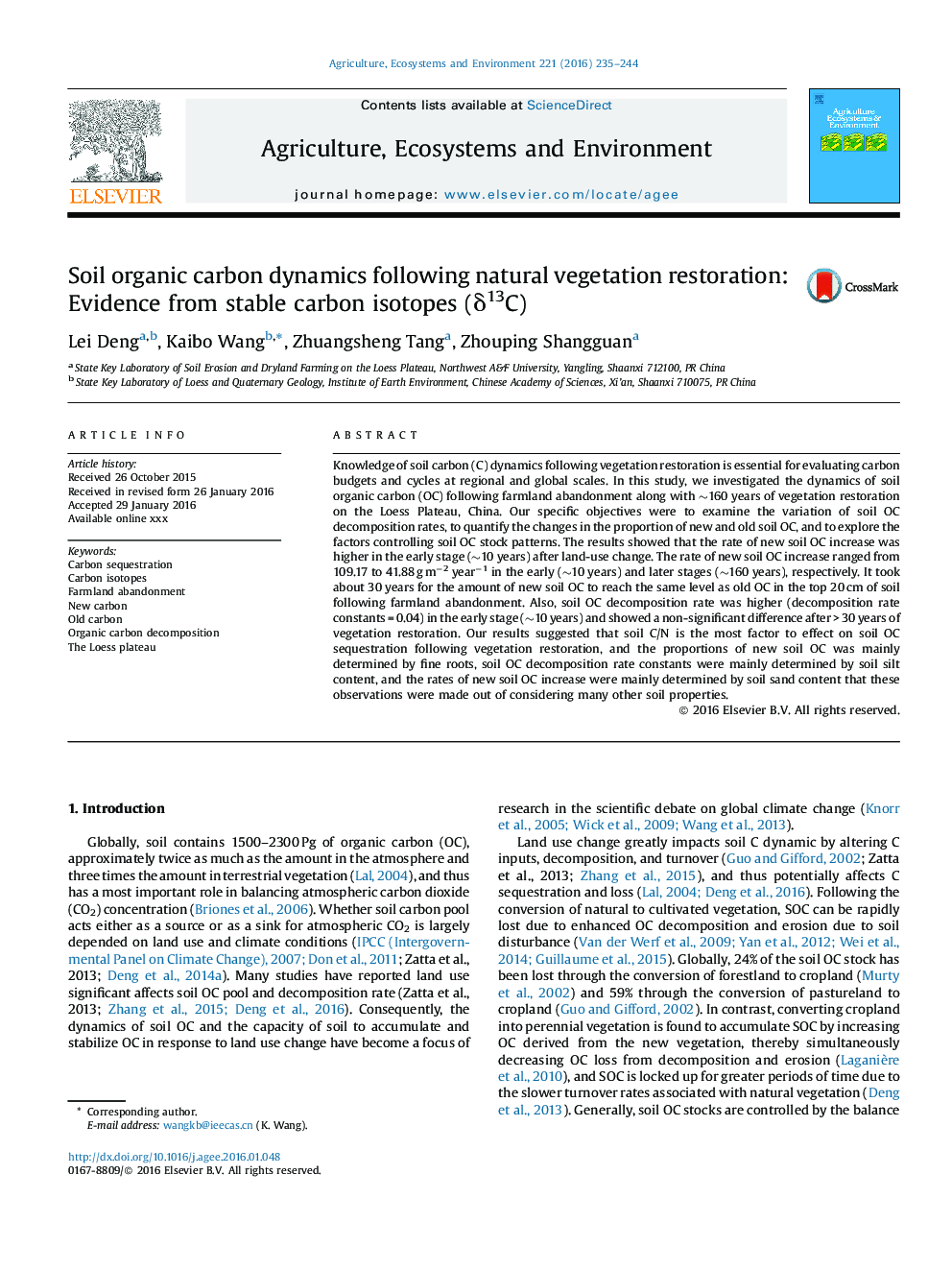| Article ID | Journal | Published Year | Pages | File Type |
|---|---|---|---|---|
| 8487462 | Agriculture, Ecosystems & Environment | 2016 | 10 Pages |
Abstract
Knowledge of soil carbon (C) dynamics following vegetation restoration is essential for evaluating carbon budgets and cycles at regional and global scales. In this study, we investigated the dynamics of soil organic carbon (OC) following farmland abandonment along with â¼160 years of vegetation restoration on the Loess Plateau, China. Our specific objectives were to examine the variation of soil OC decomposition rates, to quantify the changes in the proportion of new and old soil OC, and to explore the factors controlling soil OC stock patterns. The results showed that the rate of new soil OC increase was higher in the early stage (â¼10 years) after land-use change. The rate of new soil OC increase ranged from 109.17 to 41.88 g mâ2 yearâ1 in the early (â¼10 years) and later stages (â¼160 years), respectively. It took about 30 years for the amount of new soil OC to reach the same level as old OC in the top 20 cm of soil following farmland abandonment. Also, soil OC decomposition rate was higher (decomposition rate constants = 0.04) in the early stage (â¼10 years) and showed a non-significant difference after > 30 years of vegetation restoration. Our results suggested that soil C/N is the most factor to effect on soil OC sequestration following vegetation restoration, and the proportions of new soil OC was mainly determined by fine roots, soil OC decomposition rate constants were mainly determined by soil silt content, and the rates of new soil OC increase were mainly determined by soil sand content that these observations were made out of considering many other soil properties.
Related Topics
Life Sciences
Agricultural and Biological Sciences
Agronomy and Crop Science
Authors
Lei Deng, Kaibo Wang, Zhuangsheng Tang, Zhouping Shangguan,
